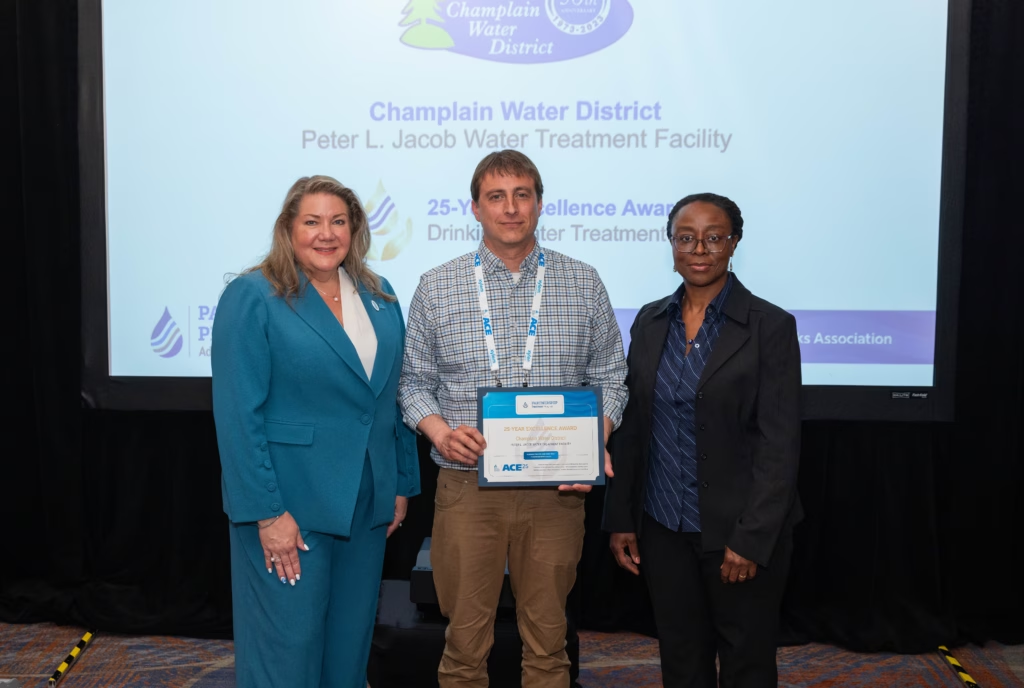Champlain marks 25 years of excellence in water treatment
October 22, 2025

AWWA Articles
Champlain marks 25 years of excellence in water treatment
Champlain Water District, the largest water utility in Vermont, has long been a leader in the sector, and its 25 years of recognition through AWWA’s Partnership for Safe Water program reinforces that reputation. As the first utility to receive the Excellence in Water Treatment Award — the Partnership’s highest possible achievement — in 1999, Champlain has sustained its exemplary status through a culture of innovation, collaboration, and continuous improvement.
“We’re now in our 26th year,” said Travis Sheldon, director of water quality operations. “The procedures are in place, but what keeps us going is our resistance to complacency. We’re always looking for ways to optimize and improve water quality.”

Sheldon joined the water district as an operator in 2013 and over the years, has observed how the partnership program shapes the utility’s approach. “It really does force you to sit down and look at the processes that you have,” he said, “and look at the improvements that you intended to do this year and see the progress you’ve made.”
The Partnership for Safe Water is an alliance of seven drinking water organizations that aim to optimize operations in the name of improving water quality and protecting public health. To participate, member utilities commit to carrying out improvement programs that often exceed industry regulations and minimums for quality.
“We display partnership logos on our vehicles and letterhead,” Sheldon said. “It features prominently in our public outreach. It allows us to show the community that we’re dedicated to going above and beyond.”
As part of the program, each year participating utilities submit a detailed report on their performance-limiting factors and potential improvements. The report, Sheldon says, becomes a guiding document for aligning teams across departments and focusing on long-term growth.
“If you’re able to identify and quantify and gather more data, you’re able to make better decisions going forward,” he said, adding that improvements don’t always need to be grand in nature.
Take, for example, the district’s newly implemented filter surveillance program, which periodically examines core samples of the filter media both before and after filter washes. The data is recorded and organized, which gives the utility year-over-year data and enables it to forecast maintenance and operational needs.
“I think if organizations only look for big changes it could be overwhelming,” he said. “This was not a huge undertaking, but it was a big improvement.”
To support the district’s continued involvement in the partnership program, Champlain holds quarterly meetings that bring together operations, electrical technologies, transmission and distribution teams. “Everybody talks about lessons learned and different ways to operate,” Sheldon said. “It’s very helpful to talk about things we’ve learned in the past quarter and what we have coming up.” It not only keeps staff up to date on their progress, he added, but it fosters a commitment to the program across all departments.
“This requires the entire staff,” he said. “We get great support from our board of commissioners, and the community. It takes that buy-in across all those levels to really be successful at something like this.”
Advertisement